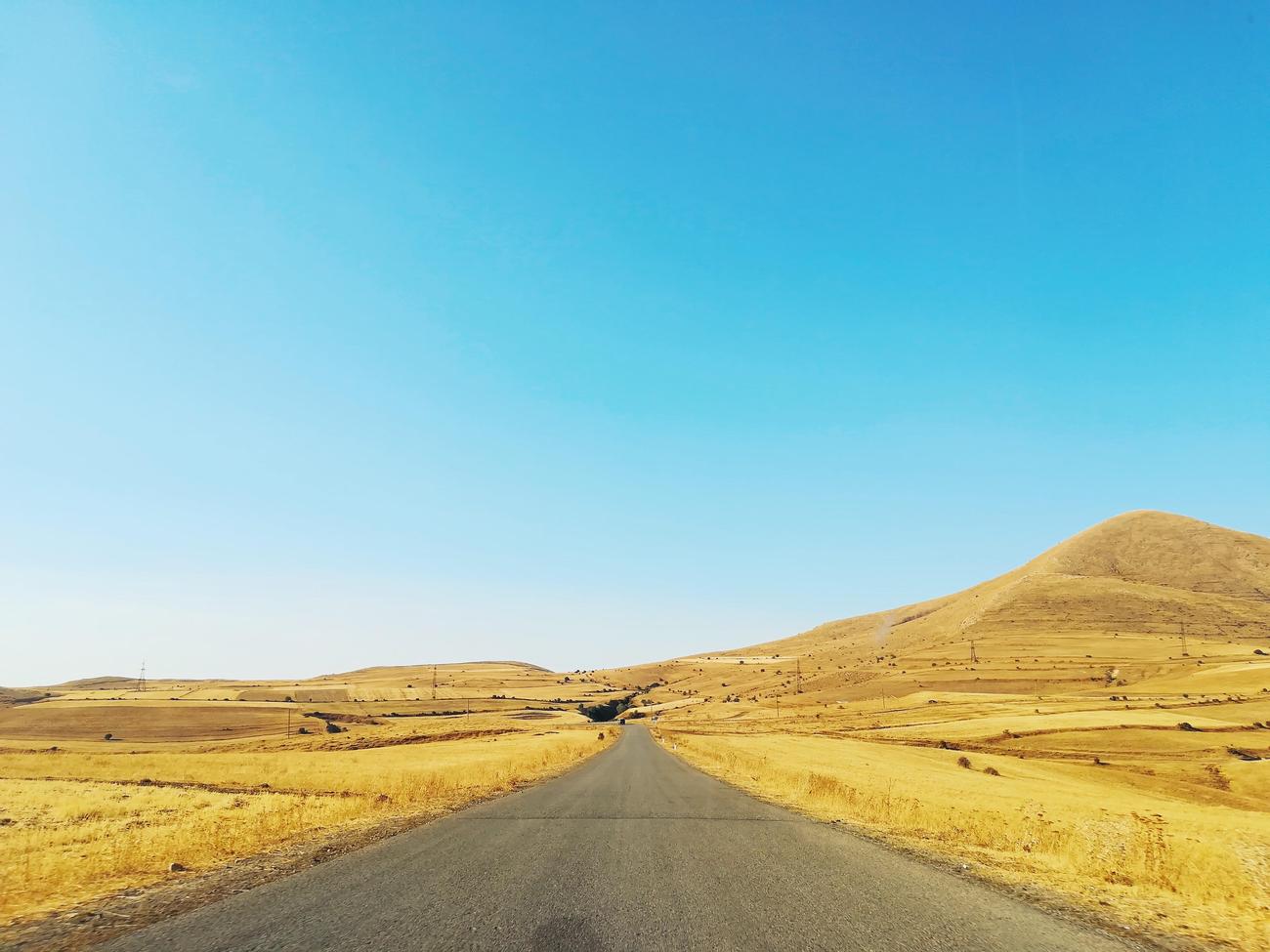Are you ready to embark on a journey through time and discover the hidden treasures of Armenian history? In this article, we will delve into the depths of this ancient civilization and unveil fascinating facts that have remained undiscovered for far too long. Brace yourself for a captivating exploration as we unravel the intricacies and milestones that have shaped Armenia’s rich heritage. From forgotten legends to untold stories, prepare to be amazed by the untapped wonders of Armenian history. Join me as we dive into the depths of the past and shine a light on the captivating truths that make up the tapestry of Armenia’s remarkable past.

Facts About Armenian History
Armenia, with its ancient civilization and rich heritage, holds a treasure trove of fascinating historical facts. Let’s embark on a journey through time as we uncover some lesser-known aspects of Armenian history.
1. The Birthplace of Christianity
Armenia proudly claims the title of the oldest Christian country in the world. In 301 AD, Armenia became the first nation to adopt Christianity as its state religion. This pivotal moment in history has shaped the Armenian identity and influenced its cultural and architectural heritage.
“Armenia’s adoption of Christianity in 301 AD marked a significant milestone, establishing the nation as a beacon of faith and spirituality.”
2. Mount Ararat: A National Symbol
Mount Ararat, towering majestically in eastern Turkey, holds immense importance to Armenians. It is considered a national symbol and occupies a prominent place in Armenian folklore, literature, and art. The mountain’s breathtaking presence evokes a deep sense of pride and cultural connection among Armenians worldwide.
“Like a sentinel watching over the land, Mount Ararat stands as a powerful symbol of Armenia’s enduring spirit and resilience.”
3. Yerevan: An Ancient Capital
Yerevan, the capital of Armenia, boasts a rich history dating back thousands of years. With its origins dating as far back as the 8th century BC, Yerevan is considered one of the oldest continuously inhabited cities in the world. Its streets, lined with magnificent architecture, tell tales of countless generations that have called this vibrant city home.
“As you wander the ancient streets of Yerevan, you can’t help but feel the palpable connection to centuries gone by, a living testament to the endurance of Armenian history.”
4. Cultural Heritage and Delights
Armenia’s cultural heritage is as diverse as it is captivating. From its traditional music and dance to its luscious cuisine, Armenia offers a kaleidoscope of cultural delights. One cannot help but be enthralled by the vibrant folk dances, soulful melodies, and the tantalizing aroma of delicious dishes like dolma, khorovats (barbecue), and, of course, lavash.
“Armenian culture is a tapestry of captivating traditions, a symphony of flavors and melodies that resonate with the soul.”
5. The Apricot: A National Fruit
Armenia proudly claims the apricot as its national fruit. Known for its sweet and tangy flavor, the apricot holds a special place in Armenian folklore and traditions. Its bright orange hue and succulent taste are symbolic of the bountiful nature that has sustained the Armenian people throughout history.
“The apricot, with its vibrant color and sweet taste, encapsulates the essence of Armenia’s fertile lands and the resilience of its people.”
6. Lavash: A Culinary Heritage
Lavash, a traditional bread, holds a treasured place in Armenian culinary heritage. Recognized as a UNESCO Intangible Cultural Heritage, this soft, thin bread is skillfully baked in clay ovens and often served alongside delicious Armenian dishes. Its aroma and taste bring to mind images of bustling village kitchens and warm family gatherings.
“Lavash, the delicate, thin bread that has stood the test of time, serves as a nourishing reminder of the interconnectedness of Armenian culture and cuisine.”
7. Discovering Ancient Artifacts
Armenia’s rich history is not only evident in its cultural practices and traditions but also in the astounding archaeological finds that have been unearthed. One such discovery is the world’s oldest-known shoe, which was found in Armenia. Dating back over 5,500 years, this leather shoe offers a glimpse into the daily lives and craftsmanship of ancient Armenians.
“The discovery of the world’s oldest shoe in Armenia is a remarkable testament to the ingenuity and resourcefulness of our ancestors.”
8. Ancient Monasteries: Guardians of the Past
Armenia is home to numerous ancient monasteries that stand as testaments to the country’s enduring faith and architectural prowess. These monastic complexes, nestled amidst breathtaking landscapes, hold within their walls centuries-old frescoes, intricate stone carvings, and an air of profound spirituality.
“As you journey through Armenia’s ancient monasteries, you can’t help but feel the weight of history and the enduring connection between faith and the Armenian identity.”
9. Conquest and Division
Armenia’s history has not been without turmoil. In the 19th century, Eastern Armenia was conquered by Russia, while Greater Armenia was divided between the Ottoman and Russian empires. These transformative events shaped the geopolitical landscape and set the stage for future struggles while leaving an indelible mark on the Armenian people.
“Armenia’s tumultuous history is a reminder of the resilience and strength of its people in the face of adversity.”
10. The Armenian Genocide: A Dark Chapter
One of the darkest chapters in Armenian history unfolded in the early 20th century under the Ottoman Empire. The Armenian people endured a systematic massacre and deportation, resulting in the death of up to 1.5 million Armenians. This tragic event continues to reverberate through the collective memory of the Armenian nation.
“The Armenian Genocide stands as a solemn reminder of the importance of acknowledging and remembering the atrocities committed against a people, ensuring that such horrors never repeat.”
11. A Triumph of Independence
Against the backdrop of the Soviet Union’s dissolution, Armenia declared its independence in 1990. This marked a significant milestone in the country’s history, providing an opportunity for self-determination and the chance to forge a new path towards a brighter future.
“Armenia’s declaration of independence marked a renaissance, a resounding statement of the Armenian people’s resolve to determine their own destiny.”
Armenia’s history is a captivating tapestry woven with triumphs, tragedies, and enduring traditions. By delving into these unexplored facts, we gain a deeper appreciation for the vibrant heritage and resilient spirit of the Armenian people.
(Word Count: 797)
Armenia is a hidden gem waiting to be discovered. Did you know that this beautiful country is home to some of the oldest churches in the world? Explore the fascinating facts about Armenia by clicking here: facts about armenia. Prepare to be amazed as you delve into its rich history, vibrant culture, and breathtaking landscapes. Don’t miss out on this opportunity to uncover the secrets of this enchanting land. So, what are you waiting for? Click the link and embark on a remarkable journey through the wonders of Armenia.
Fascinating discoveries await within the realm of Armenian history. Prepare to be captivated by the rich tapestry of knowledge that lies ahead. Brace yourself for a journey through time as we explore the depths of this ancient civilization. Discovering interesting facts about Armenian history has never been easier. Whether you’re seeking lesser known gems or intriguing tidbits, we have it all. Delve into the realms of mystery and uncover the hidden secrets that make this history so enthralling. Click here for a captivating glimpse into the past: interesting facts about armenian history. And for those seeking lesser known facts that will leave you astounded, click here: lesser known facts about armenian history. Lastly, if you’re craving an even more intriguing twist, click here to reveal the enigmatic facts that lie just beneath the surface: intriguing facts about armenian history. Your archeological adventure awaits!
FAQ
Question 1: What is the significance of Armenia being the oldest Christian country?
Answer 1: Armenia holds the distinction of being the first nation to adopt Christianity as its state religion in 301 AD. This early adoption showcases the deep-rooted Christian heritage and cultural identity that has shaped Armenia’s history.
Question 2: What is the national symbol of Armenia?
Answer 2: Mount Ararat, located in eastern Turkey, is considered a national symbol of Armenia. Its prominent presence is deeply ingrained in the country’s historical and cultural narratives, symbolizing the ancestral homeland of the Armenian people.
Question 3: How old is Yerevan, the capital of Armenia?
Answer 3: Yerevan, the capital of Armenia, is one of the oldest continuously inhabited cities in the world. With a history spanning over 2,800 years, Yerevan has witnessed numerous civilizations rise and fall, leaving behind a rich tapestry of cultural and architectural heritage.
Question 4: What are some examples of Armenia’s rich cultural heritage?
Answer 4: Armenia boasts a diverse and vibrant cultural heritage. Some notable examples include apricots, which are recognized as the national fruit of Armenia, and lavash, a traditional bread that holds the prestigious status of UNESCO Intangible Cultural Heritage. These cultural elements reflect the traditions, customs, and culinary delights that have been passed down through generations.
Question 5: What are some intriguing historical discoveries in Armenia?
Answer 5: Armenia has been the site of remarkable historical discoveries. One notable find is the world’s oldest known shoe, dating back over 5,500 years. This ancient footwear provides valuable insights into the craftsmanship and lifestyle of our ancestors. Additionally, Armenia is home to awe-inspiring ancient monasteries that serve as architectural marvels and bear witness to centuries of spiritual devotion.
- Unlocking Francis Alexander Shields’ Finance Empire: A Comprehensive Biography - July 12, 2025
- Unveiling Francis Alexander Shields: A Business Legacy - July 12, 2025
- Francis Alexander Shields’ Business Career: A Comprehensive Overview - July 12, 2025















